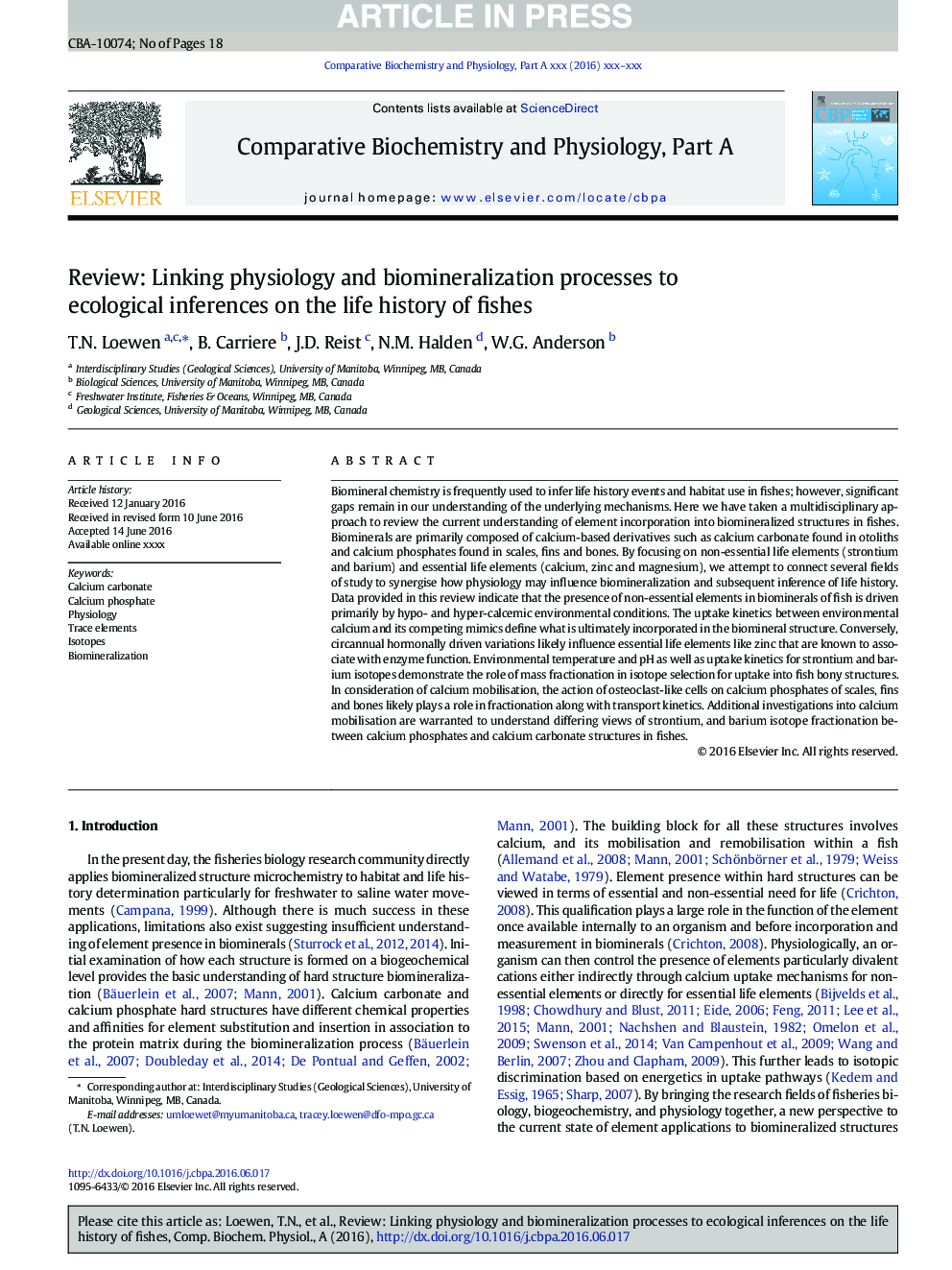| Article ID | Journal | Published Year | Pages | File Type |
|---|---|---|---|---|
| 5510356 | Comparative Biochemistry and Physiology Part A: Molecular & Integrative Physiology | 2016 | 18 Pages |
Abstract
Biomineral chemistry is frequently used to infer life history events and habitat use in fishes; however, significant gaps remain in our understanding of the underlying mechanisms. Here we have taken a multidisciplinary approach to review the current understanding of element incorporation into biomineralized structures in fishes. Biominerals are primarily composed of calcium-based derivatives such as calcium carbonate found in otoliths and calcium phosphates found in scales, fins and bones. By focusing on non-essential life elements (strontium and barium) and essential life elements (calcium, zinc and magnesium), we attempt to connect several fields of study to synergise how physiology may influence biomineralization and subsequent inference of life history. Data provided in this review indicate that the presence of non-essential elements in biominerals of fish is driven primarily by hypo- and hyper-calcemic environmental conditions. The uptake kinetics between environmental calcium and its competing mimics define what is ultimately incorporated in the biomineral structure. Conversely, circannual hormonally driven variations likely influence essential life elements like zinc that are known to associate with enzyme function. Environmental temperature and pH as well as uptake kinetics for strontium and barium isotopes demonstrate the role of mass fractionation in isotope selection for uptake into fish bony structures. In consideration of calcium mobilisation, the action of osteoclast-like cells on calcium phosphates of scales, fins and bones likely plays a role in fractionation along with transport kinetics. Additional investigations into calcium mobilisation are warranted to understand differing views of strontium, and barium isotope fractionation between calcium phosphates and calcium carbonate structures in fishes.
Related Topics
Life Sciences
Biochemistry, Genetics and Molecular Biology
Biochemistry
Authors
T.N. Loewen, B. Carriere, J.D. Reist, N.M. Halden, W.G. Anderson,
